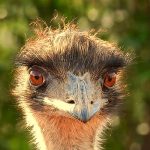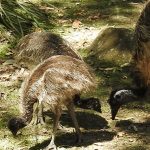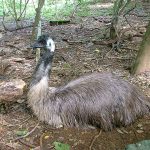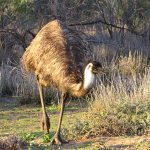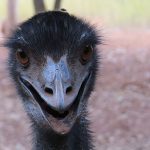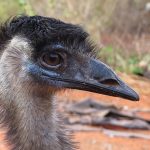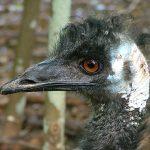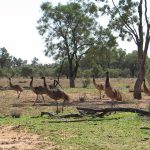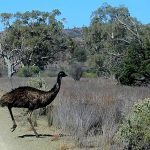The Emu is a ground-dwelling bird, and it is the largest bird native to Australia and the second-largest bird in the world, after the ostrich. Emus are flightless birds, and they have adapted to a terrestrial lifestyle, spending most of their time on the ground.
These birds have long legs and strong, three-toed feet that are well-suited for running. Emus are fast runners and can reach speeds of up to 48 km per hour. They primarily inhabit grasslands, savannas, and forests, and are known to travel long distances in search of food and water.
Emus are herbivores, and their diet includes various plants, fruits, seeds, and insects. They have a unique behavior of swallowing small stones to help with the grinding of their food in the muscular gizzard.
Emus are found throughout most of mainland Australia. They inhabit a wide range of habitats, including savannas, grasslands, open woodlands, and even arid and semi-arid regions. They prefer areas with access to water sources and vegetation for feeding.
Emus are large flightless birds, with males typically reaching around 1.9 meters in height, while females are slightly smaller. They have long legs with three toes, each ending in a sharp claw. Their feathers are usually brownish-grey, helping them blend into their environment.
Emus are usually solitary birds but may form loose social groups during non-breeding periods or when resources are plentiful. During breeding season, males become territorial and may engage in displays and vocalizations to attract females.
Emus are polygamous breeders. Females lay large, dark green eggs 13 cm long and may lay several clutches in a season. After laying the eggs, the female leaves the nest, and the male incubates the eggs, protecting them from predators.
Emus are primarily herbivorous, consuming a variety of plant matter, including fruits, seeds, flowers, leaves, and young shoots. They can also eat insects, small vertebrates, and some man-made foods like grains and crops if available.
Emus are well-adapted to their environment. Their long legs and powerful muscles allow them to run at high speeds, making them one of the fastest birds on land. They can also swim and can cover long distances in search of food and water.
Like many wildlife species, they face threats from habitat destruction, vehicle collisions, and human interactions.
Emus hold cultural significance for Indigenous Australian communities. They have been a part of Aboriginal culture and traditions for thousands of years, featuring in stories, art, and ceremonies.
Remember that while emus are fascinating creatures, it is essential to respect their natural habitat and observe them from a distance to avoid causing them stress or harm. If you ever have the opportunity to see emus in the wild, it can be an incredible and memorable experience of Australia’s unique wildlife.

